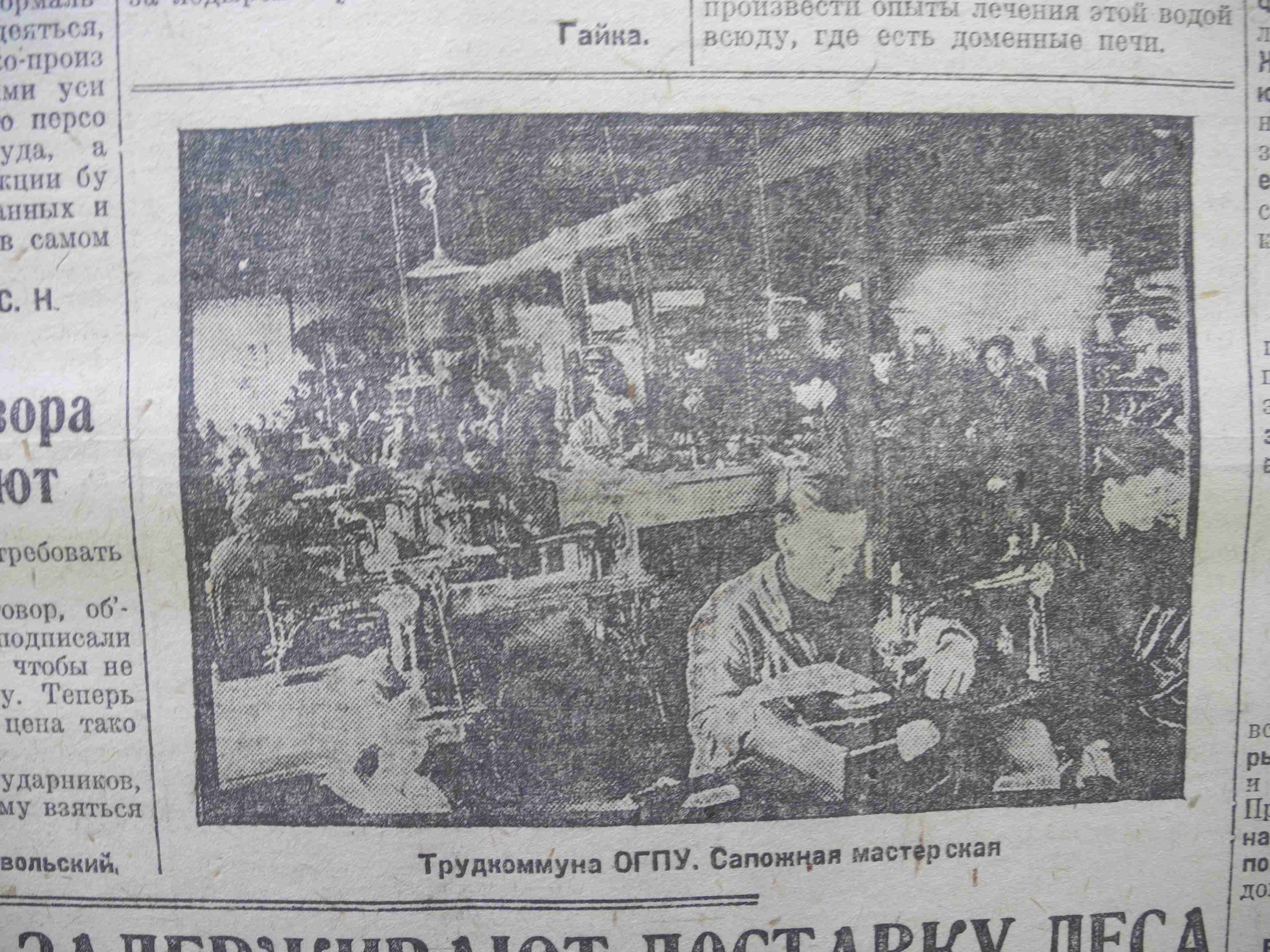10 | Tomsk 27.08.2014
Identifying the Labour Camp and
Uncanny Parallels Between History and Present

Inside a workshop at the Trudkommuna, Krasnoe znamya, 1932
Headlines in Krasnoe znamya editions of early 1932
such as "Freeing the Kuzbass of the dependency on imports"
or "Provocative Attack was Intended to Compromise the
International Position of the USSR" uncannily conjure up
worrying parallels to today's volatile situation.
An attack on the aide of the German ambassador,
general terror threats, the USSR getting threatened and
marginalised by Western powers and the urgency of becoming
economically and technologically independent seem
to dominate the Tomsk local paper's headlines
in the early 1930s.
Visiting the NKVD Museum a third time,
in order to interview its founder and director Vassilii Khanevich:
Yes, he says, people will have been very aware
of the presence of this prison on the main street in
a central location. Until 1933 the square opposite had still
been occupied by a large cathedral which looked almost
like the Cathedral of Christ Saviour in Moscow.
Both were torn down in the mid-1930s, and today only
the name of the square reminds of the former church in Tomsk.
Repressions started in the early 1930s, even if the peak
occurred in the year 1937, and the NKVD remand prison
on prospekt Lenina 44 was a well-known institution
that every citizen would regularly walk past.
I remember my mother telling me that she was sure
that they had seen on at least one occasion a group
of forced labourers or prisoners of the GULag system as
they were being marched from their camp or detention centre
to a work place or to another camp. She probably was right.
As an expert on the Stalinist penal system
Khanevich was able to provide a solution to the mystery
of what and where the "trudkommuna" was.
There was a well-known penal colony outside Tomsk
in those days, known as "Kommuna Chekist".
This was a correction facility for youth, a labour
and re-education camp. I came across an article in
Krasnoe znamya about the success of turning "khuligany",
perceived criminal or otherwise non-compliant youth,
into members of shock brigade teams, "udarniki".
I bet this was an article about the successful work
of this institution, putting Soviet uneducated youth
on the right tracks of becoming useful workers
and New Soviet people.
In combination with the comments in the former Party Archive
about trying to involve the German specialists at Shakhtstroi
in political work, this was another great discovery,
another piece of the puzzle that fell into place!